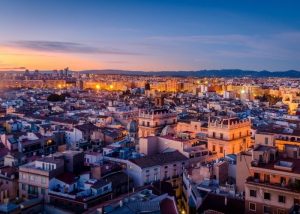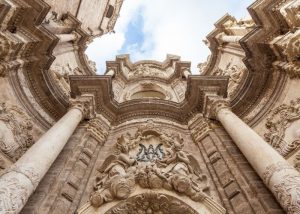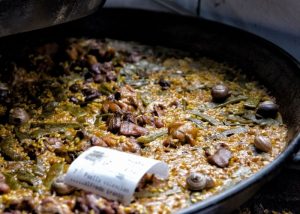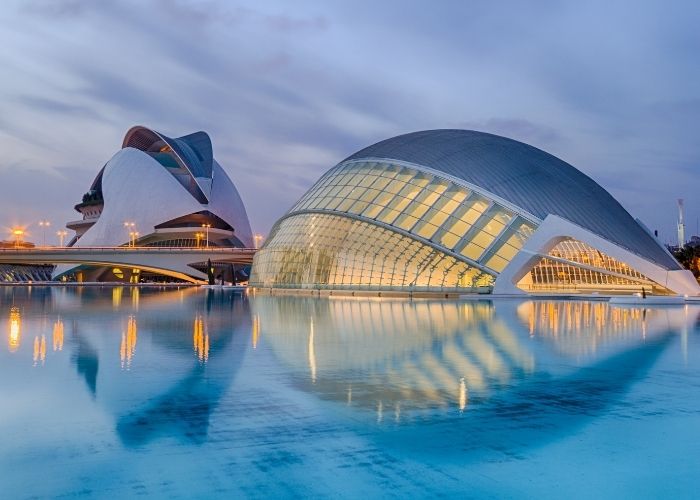Valencia is one of Spain´s oldest and most important cities and was founded over 2000 years ago when it was as a Roman colony. During Roman times, it was a walled city, and the cobbled narrow streets of the old town are where you will find the historic centre of Valencia. In current times, it has been chosen as World Design Capital for 2022.
Over the years there have been many distinct influences. Not just the Romans, but also Moroccan and Arab Moors, Germanic Goths, and Christians. Each one introducing their religion, customs, and languages. All this can be seen in the architecture and experienced in the city vibe. To this day, Valencia isn’t a typical Spanish city. It even has its own language which is a dialect of Catalan.
Vibrant, bustling and breathtaking

Valencia is a port city and is the third-largest in Spain after Madrid and Barcelona. It is a vibrant, bustling city and has many futuristic and sometimes flamboyant designed buildings that sit alongside ancient ruins. One of the great things about visiting Valencia is how you may be wandering down an average street, but then suddenly come across a breathtakingly grand palace.
A city of extremes
The City of Arts and Sciences is a futuristic architectural complex like nothing you’ve ever seen before. You may even have seen it as the backdrop for a movie, such as Tomorrowland and Westworld.
The narrowest building in Europe and the second narrowest in the world is in Valencia. You can find it Plaza Lope de Vega, close to the cathedral. The facade is only 107 metres wide and 5 stories high. You may wonder why anyone would build such a narrow house. With good reason! It dates to the days when property was taxed based on the width of the building´s façade. Tax evasion in the early days!
 Not only is there amazing architecture, but also there are plenty of green spaces. You can visit museums (many are free to enter) and a cathedral. The 13th-century cathedral was once a Roman temple and later a mosque. The holy grail (the chalice from which Jesus drank at the last supper) is alleged to be kept in a chapel inside the cathedral. If you feel fit enough to climb the 207 steps, you can see the magnificent views from the top of the bell tower of the cathedral.
Not only is there amazing architecture, but also there are plenty of green spaces. You can visit museums (many are free to enter) and a cathedral. The 13th-century cathedral was once a Roman temple and later a mosque. The holy grail (the chalice from which Jesus drank at the last supper) is alleged to be kept in a chapel inside the cathedral. If you feel fit enough to climb the 207 steps, you can see the magnificent views from the top of the bell tower of the cathedral.
UNESCO
UNESCO declared 15th century La Lonja (the silk exchange) a World Heritage site. Although La Lonja is the only world heritage site in the city, there are two other UNESCO listings. The Water Tribunal, which dates back 800 years ago, and Las Fallas Festival were added to UNESCO’s list of Intangible Cultural Heritage. Normally this takes place in March each year, but due to corona restrictions, it had been postponed. Instead, it was celebrated earlier this month.
Culture and cuisine

Ernest Hemingway was a frequent visitor to Valencia. Seemingly Valencia calmed, charmed, and inspired him.
Valencia is also the birthplace of paella, which is famous throughout the whole of Spain. Authentic paella Valenciana is made with chicken or rabbit, white beans, and snails. However, seafood and meat are also popular here.
In addition to all the culture and cuisine that Valencia is famous for, there is also vibrant nightlife. One of the popular drinks in the area is Agua de Valencia. However, don´t think the nightlife is boring if everyone appears to be drinking water. Agua here is an interesting mix of cava, orange juice, gin, and vodka.
And don´t forget the beaches; Valencia has everything you could possibly wish for.


